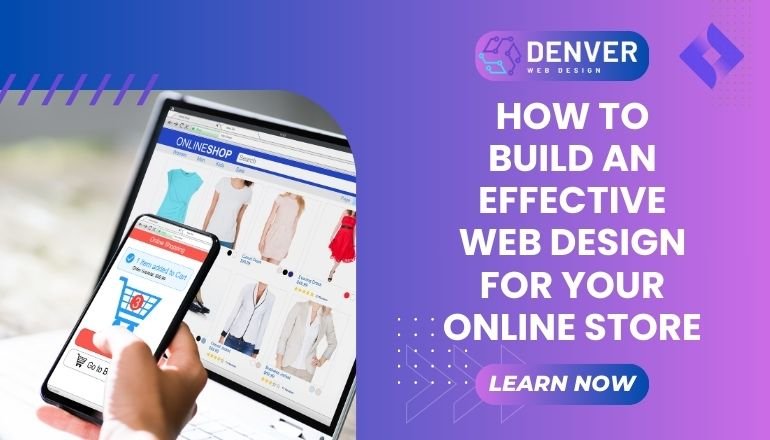
Introduction
Creating an effective web design for your online store is essential for driving traffic, improving user experience, and boosting conversions. In today’s competitive digital landscape, implementing best practices in web design can significantly impact the success of your business. An intuitive, responsive, and visually appealing website not only attracts potential customers but also helps retain them. This guide will explore the key components of responsive web design and how addressing these aspects can solve common problems faced by businesses, such as low engagement and high bounce rates. For businesses in need of custom solutions, companies like Web Design Denver can be pivotal in transforming their online presence.
What is Web Design for Online Stores?
Web design for online stores encompasses creating a visually appealing and functional website tailored for e-commerce purposes. It focuses on user experience (UX), responsive layouts, and seamless navigation to ensure shoppers can easily browse, select, and purchase products. Key elements include adaptive design, mobile-first approaches, and integration of secure payment gateways. Effective web design plays a crucial role in creating user-friendly websites that cater to the diverse needs of online shoppers, whether they’re accessing your store from a desktop or mobile device.
Why is Responsive Web Design Essential for Your Website?
Responsive web design ensures that your website adjusts seamlessly to different screen sizes and devices, providing a consistent user experience. This is crucial for improving search engine visibility and optimizing site performance. As mobile usage continues to dominate, a mobile-first design ensures that your online store appeals to a broad audience. For example, websites designed with SEO optimization in mind often rank higher on Google and drive more organic traffic. By employing best practices such as responsive layouts and fast loading speeds, businesses can enhance their user experience while achieving their goals of improved conversions and customer satisfaction.
Key Features of an Effective Web Design for Online Stores
- Mobile Responsiveness A mobile-friendly design ensures users can access your store effortlessly from any device. Leveraging responsive web design principles ensures consistency in layout, content, and navigation.
- Intuitive Navigation Simplify your site’s structure to enable users to find products quickly. Dropdown menus, clear categories, and a search bar improve usability.
- Secure Payment Gateways Building trust with customers requires integrating secure and reliable payment options. An effective web design prioritizes user data security with SSL certifications and multiple payment methods.
- Product Presentation High-quality product images, videos, and detailed descriptions enhance the online shopping experience. Utilizing design elements like zoom features and customer reviews builds trust.
- Conversion Optimization Effective calls-to-action (CTAs), streamlined checkout processes, and minimal distractions on product pages help increase sales and reduce cart abandonment rates.
Best Practices for E-commerce Web Design
- Prioritize Speed A slow-loading website drives users away. Optimize images, use lightweight frameworks, and leverage Content Delivery Networks (CDNs) to ensure fast load times.
- Focus on UX Design Principles Easy-to-navigate layouts, clean interfaces, and responsive design elements cater to both experienced and novice shoppers. Aim for clarity and accessibility.
- Implement a CMS Content Management Systems (CMS) like Shopify, WooCommerce, or Magento simplify site management and updates, especially for stores with extensive product catalogs.
- Enhance Visual Appeal Use a cohesive color scheme and professional design elements that resonate with your brand identity. This creates a visually engaging user experience.
- Optimize for SEO Incorporate keywords like “responsive web design,” “e-commerce platforms,” and “conversion optimization” naturally into your website’s meta tags and content.
Common Mistakes to Avoid
- Neglecting Mobile Design Focusing solely on desktop designs can alienate a significant portion of mobile users.
- Overloading Pages Avoid cluttered layouts that confuse visitors. Keep the design simple and focused on core elements like CTAs and product information.
- Ignoring SEO Fundamentals Skipping essential SEO practices like optimizing meta tags, alt attributes, and loading speeds can negatively impact your search rankings.
- Complicated Checkout Process Requiring excessive steps during checkout leads to cart abandonment. Aim for a straightforward, guest-friendly process.
Conclusion: Key Takeaways
An effective web design for your online store blends aesthetics with functionality. Prioritizing mobile responsiveness, intuitive navigation, and secure transactions can significantly enhance your store’s performance. Adopting best practices like optimizing for speed, leveraging UX design principles, and avoiding common pitfalls sets your business up for success. For businesses ready to transform their online presence, companies like Web Design Denver can provide the expertise needed to create a custom, high-performing e-commerce website.
Start optimizing your web design today to improve user experience, boost conversions, and drive sustainable growth for your online store.






